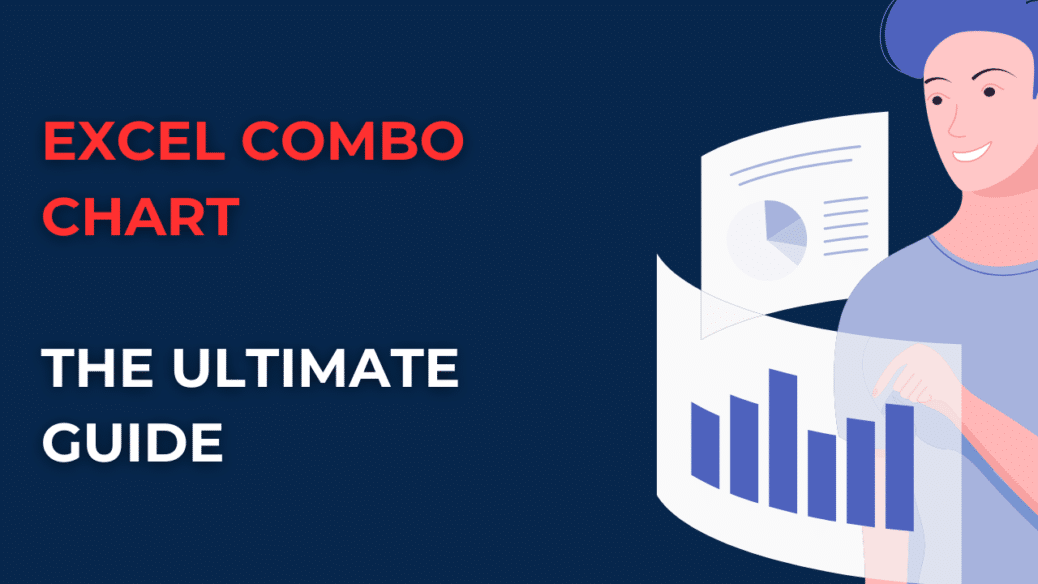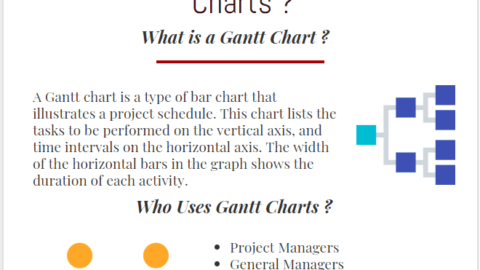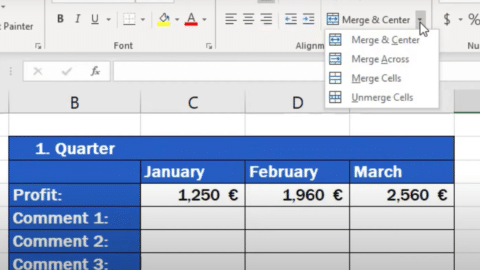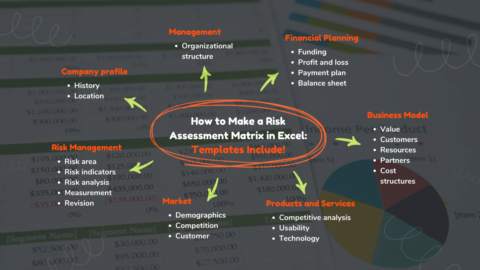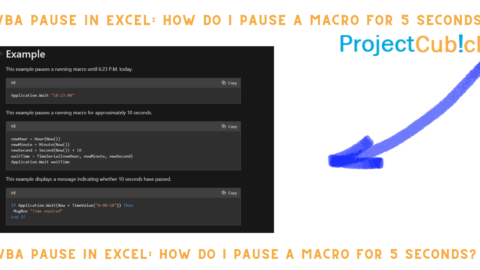Excel Combo Chart and 5 Examples: A Comprehensive Guide
If you’re looking to create a visual representation of data in Excel, then you’re in luck! Excel Combo Chart is one of the best ways to display multiple data sets on one chart. In this article, we’ll explore what Excel Combo Chart is, how it works, and provide five examples to help you get started.
Table of Contents
Meta Description:
Learn everything you need to know about Chart and 5 Examples in this comprehensive guide. Discover how to create, customize and use a combo chart to display multiple data sets on one chart in Excel.
Introduction
Excel is a powerful tool for data analysis and visualization. One of the most useful features of Excel is the ability to create charts that make it easy to see trends, patterns, and relationships in data. Excel Combo Chart is a powerful chart type that allows you to combine two or more chart types into one chart. Combining different chart types allows you to display different data types on a single chart, making it easy to compare and analyze different data sets.
This article will explain what Excel Combo Chart is and how it works. We’ll also provide five examples of using the Excel Combo Chart to visualize different data types.
Excel Combo Chart: What is it?
Excel Combo Chart is a type of chart that allows you to combine two or more chart types into a single chart. This means you can display different data types on a single chart, making comparing and analyzing different data sets easier.
A chart consists of two or more chart types, such as a column chart and a line chart, combined into a single chart. Each data set is represented by a different chart type, which can be customized to suit your needs.
The chart is useful when you have two or more data sets with different units of measurement. For example, you may want to display sales data in dollars and the number of units sold on the same chart. Using a Chart, you can display both data sets on a single chart and compare them visually.
How to Create an Excel Combo Chart?
Creating an Excel Combo Chart is simple and easy. Here are the steps you need to follow:
- Select the data you want to include in the chart.
- Click on the “Insert” tab on the ribbon.
- Click on the “Combo” chart type.
- Select the chart types you want to combine.
- Click on “OK”.
Once you’ve created your Excel Combo Chart, you can customize it to suit your needs. You can change the chart type, add titles and labels, and adjust the chart’s formatting.
5 Examples of Excel Combo Chart
Now that you understand what Excel Combo Chart is and how to create it, let’s look at five examples of how to use it to visualize different data types.
Example 1: Temperature and Precipitation
Suppose you want to visualize temperature and precipitation data for a particular city. You can use Excel Combo Chart to display both data sets on a single chart. Here’s how you can do it:
- Select the data for temperature and precipitation.
- Click on the “Insert” tab on the ribbon.
- Click on the “Combo” chart type.
- Select the “Clustered Column – Line” chart type.
- Click on “OK”.
You’ll now have a chart that displays the temperature as a line chart and precipitation as a column chart. You can customize the chart by adding titles and labels and adjusting the formatting.
Example 2: Sales and Profit
Suppose you want to visualize sales and profit data for a particular product. You can use Chart to display both data sets on a single chart. Here’s how you can do it:
- Select the data for sales and profit.
- Click on the “Insert” tab on the ribbon.
- Click on the “Combo” chart type.
- Select the “Clustered Column – Line” chart type.
- Click on “OK”.
You’ll now have a chart that displays sales as a column chart and profit as a line chart. You can customize the chart by adding titles and labels and adjusting the formatting.
Example 3: Project Status
Suppose you want to visualize the status of a project for a time. You can use Excel Combo Chart to display the actual and planned progress on a single chart. Here’s how you can do it:
- Select the data for actual progress and planned progress.
- Click on the “Insert” tab on the ribbon.
- Click on the “Combo” chart type.
- Select the “Clustered Column – Line” chart type.
- Click on “OK”.
You’ll now have a chart that displays actual progress as a column chart and planned progress as a line chart. You can customize the chart by adding titles and labels and adjusting the formatting.
Example 4: Market Share
Suppose you want to visualize the market share of different products for a particular time period. You can use Chart to display the market share data as a column chart and the growth rate data as a line chart. Here’s how you can do it:
- Select the data for market share and growth rate.
- Click on the “Insert” tab on the ribbon.
- Click on the “Combo” chart type.
- Select the “Clustered Column – Line” chart type.
- Click on “OK”.
You’ll now have a chart displaying market share as a column and growth rate as a line chart. You can customize the chart by adding titles and labels and adjusting the formatting.
Example 5: Budget Comparison
Suppose you want to compare the budgeted and actual expenses for a particular department. You can use Excel Combo Chart to display both sets of data on a single chart. Here’s how you can do it:
- Select the data for budgeted and actual expenses.
- Click on the “Insert” tab on the ribbon.
- Click on the “Combo” chart type.
- Select the “Clustered Column – Line” chart type.
- Click on “OK”.
You’ll now have a chart displaying budgeted expenses as a column and actual expenses as a line chart. You can customize the chart by adding titles and labels and adjusting the formatting.
Excel Combo Chart and 5 Examples: FAQs
- What is a Chart? Excel Combo Chart is a type of chart that allows you to combine two or more chart types into a single chart.
- How do I create a Chart? To create an Excel Combo Chart, select the data you want to include in the chart, click on the “Insert” tab on the ribbon, click on the “Combo” chart type, select the chart types you want to combine, and click on “OK”.
- What are some examples of Charts? Examples of Excel Combo Charts include temperature and precipitation, sales and profit, project status, market share, and budget comparison.
- Can I customize the Chart? You can customize Excel Combo Chart by adding titles and labels and adjusting the formatting.
- What is the advantage of using Excel Combo Chart? The advantage of using Excel Combo Chart is that it allows you to display multiple data sets on one chart, making it easier to compare and analyze different data sets.
- Can I add more than two chart types to the Chart? You can add more than two chart types to Excel Combo Chart. Simply select the chart types you want to combine when creating the chart.
Conclusion
A chart is a powerful tool for visualizing multiple data sets on one chart. You can easily compare and analyze different data sets by combining different chart types. In this article, we’ve explained what Chart is and how it works. We’ve also provided five examples of how you can use Charts to visualize different data types.
With this guide, you should now be able to create and customize Excel Combo Chart to suit your needs. Remember to experiment with different chart types and formatting options to create the perfect chart for your data.
If you have any further questions about Excel Combo Chart or need help creating your own chart, feel free to contact us in the comments below.
Thank you for reading!
Hello, I’m Cansu, a professional dedicated to creating Excel tutorials, specifically catering to the needs of B2B professionals. With a passion for data analysis and a deep understanding of Microsoft Excel, I have built a reputation for providing comprehensive and user-friendly tutorials that empower businesses to harness the full potential of this powerful software.
I have always been fascinated by the intricate world of numbers and the ability of Excel to transform raw data into meaningful insights. Throughout my career, I have honed my data manipulation, visualization, and automation skills, enabling me to streamline complex processes and drive efficiency in various industries.
As a B2B specialist, I recognize the unique challenges that professionals face when managing and analyzing large volumes of data. With this understanding, I create tutorials tailored to businesses’ specific needs, offering practical solutions to enhance productivity, improve decision-making, and optimize workflows.
My tutorials cover various topics, including advanced formulas and functions, data modeling, pivot tables, macros, and data visualization techniques. I strive to explain complex concepts in a clear and accessible manner, ensuring that even those with limited Excel experience can grasp the concepts and apply them effectively in their work.
In addition to my tutorial work, I actively engage with the Excel community through workshops, webinars, and online forums. I believe in the power of knowledge sharing and collaborative learning, and I am committed to helping professionals unlock their full potential by mastering Excel.
With a strong track record of success and a growing community of satisfied learners, I continue to expand my repertoire of Excel tutorials, keeping up with the latest advancements and features in the software. I aim to empower businesses with the skills and tools they need to thrive in today’s data-driven world.
Suppose you are a B2B professional looking to enhance your Excel skills or a business seeking to improve data management practices. In that case, I invite you to join me on this journey of exploration and mastery. Let’s unlock the true potential of Excel together!
https://www.linkedin.com/in/cansuaydinim/

